Essential Oils Often Used in Therapeutic Massage—and Why
August 14, 2025
10 min
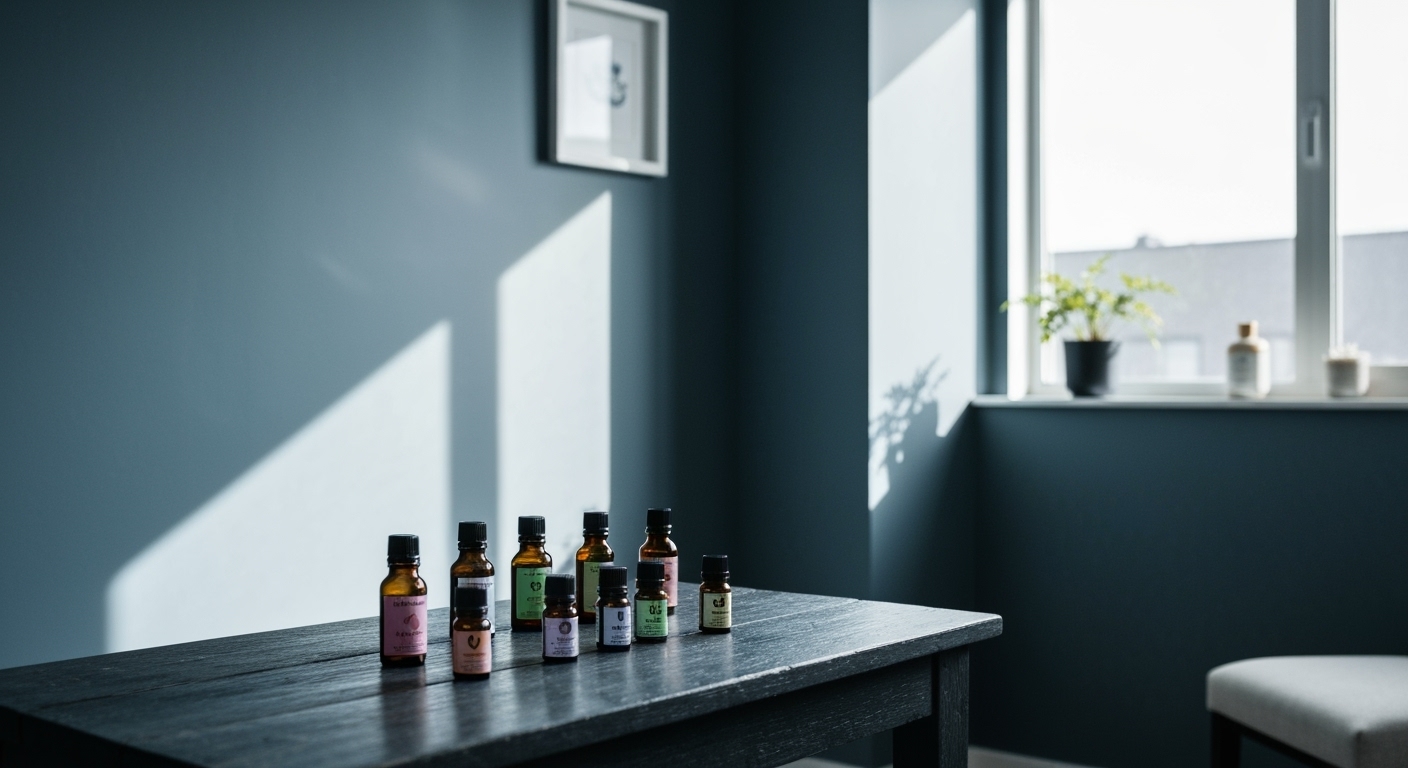
The Art and Science of Aromatherapy Massage
Essential oils have long been cherished for their therapeutic and aromatic properties, playing a vital role in enhancing massage therapy. Combining the healing touch of massage with the nuanced benefits of essential oils, therapists offer an enriched experience that targets physical ailments while promoting mental wellness. This article explores the most commonly used essential oils in therapeutic massage, their specific benefits, safety considerations, and the scientific evidence supporting their efficacy.
Understanding Essential Oils and Their Role in Massage Therapy

What are essential oils and how are they used in massage therapy?
Essential oils are highly concentrated plant extracts obtained from parts like leaves, flowers, bark, and roots. These natural oils are rich in aromatic compounds that can influence mood and health. In massage therapy, essential oils are often added to carrier oils such as jojoba, sweet almond, or coconut oil to create blends that promote relaxation, reduce inflammation, and soothe muscles. When spread over the skin, they can enhance the therapeutic effects of the massage and provide aromatherapy benefits.
How are essential oils incorporated into massage treatments?
There are multiple methods to include essential oils in massage therapy. Most commonly, they are diluted in carrier oils to ensure safe skin absorption. The blended oils are then used during the massage to glide smoothly over the body, improving contact and pressure application.
Other methods include diffusing essential oils in the massage room to fill the space with calming scents or applying warming towels infused with oils to enhance relaxation. Some therapists also spritz aromatic mists or use essential oils in bath treatments before the massage.
The importance of diluting essential oils with carrier oils
Since essential oils are very concentrated, direct application to the skin can cause irritation or allergic reactions. To prevent this, they are diluted in carrier oils, which serve both as a safe medium and as moisturizers for the skin. Typical dilution ratios vary from 1% to 5%, depending on the oil used and individual sensitivities.
Carrier oils like jojoba, sweet almond, or grapeseed are chosen based on the skin type and desired outcome. For example, jojoba is good for sensitive skin, while coconut offers quick absorption and a pleasant aroma.
The impact of aromatherapy on mind and body
Inhalation of essential oils during massage can influence emotional and physical health. Scents like lavender and chamomile promote deep relaxation and reduce stress, while citrus oils like orange and bergamot uplift mood and boost energy. These aromatic effects involve the brain’s limbic system, which governs emotions and memories.
Research supports that inhaling certain essential oils can lower cortisol levels, ease anxiety, and improve sleep. When combined with physical massage, aromatherapy can deepen relaxation, alleviate pain, and support overall well-being.
Common methods of incorporating essential oils in massage
Beyond dilution, essential oils are integrated into therapy in several ways:
- Added to massage oils or lotions for direct skin application.
- Diffused into the room for ambient aromatherapy.
- Infused into warming towels or compresses.
- Sprayed as aromatic mists.
These practices enhance the sensory experience, making massage not only physically but also emotionally and mentally restorative. When choosing oils, it’s important to consider individual needs, sensitivities, and the desired therapeutic effects to customize the treatment effectively.
Key Essential Oils and Their Therapeutic Benefits in Massage

What are the therapeutic benefits of using essential oils in massage therapy?
The use of essential oils in massage therapy provides a wide range of health and wellness advantages. These oils help promote relaxation, reduce anxiety and depression, and alleviate stress. When inhaled or applied topically, they influence the nervous system, neurotransmitter activity, and hormonal balance, resulting in calming and sedative effects.
Incorporating essential oils like lavender, chamomile, or rosemary can enhance the overall massage experience by improving sleep quality, reducing fatigue, and boosting mental clarity. Therapists often diffuse these oils in the massage room, mix them into carrier oils, or use warming towels infused with aromatic oils to maximize benefits.
The therapeutic impacts are supported by scientific studies showing lavender oil's ability to lower cortisol levels and relieve pain. Choosing high-quality, pure essential oils and tailoring their application to client sensitivities ensures a safe and effective experience.
Overall, essential oils elevate massage therapy’s potential for physical relaxation and mental renewal, making them a valuable component of holistic health practice.
Selecting Essential Oils to Enhance Relaxation and Wellness
Which essential oils are commonly chosen for massage therapy to enhance relaxation and wellness?
Many essential oils are favored in massage therapy due to their soothing and mood-boosting effects. Lavender is one of the most popular, known for its calming and relaxing properties that help reduce stress and promote better sleep.
Peppermint and eucalyptus are also widely used for their refreshing and cooling qualities. They help ease muscle tension and promote a sense of clarity. Marjoram and cypress are added in many blends to foster deep relaxation, especially for tension relief.
Warming oils like wintergreen and black pepper are appreciated for their ability to generate warmth in the muscles, alleviating soreness and increasing comfort.
Citrus oils such as bergamot, grapefruit, and the proprietary blend Citrus Bliss® are often incorporated for their uplifting and mood-enhancing effects, which can brighten a client’s overall sense of well-being.
Some popular blend formulas, like Deep Blue® and PastTense®, combine ingredients such as peppermint, vetiver, and coriander. These are designed to target muscle tension and promote relaxation.
Choosing the right oils depends on the desired therapeutic effect, skin sensitivities, and client preferences. When combined thoughtfully, these oils can significantly enhance the benefits of massage, fostering both mental calm and physical comfort.
The Importance of Carrier Oils in Therapeutic Massage
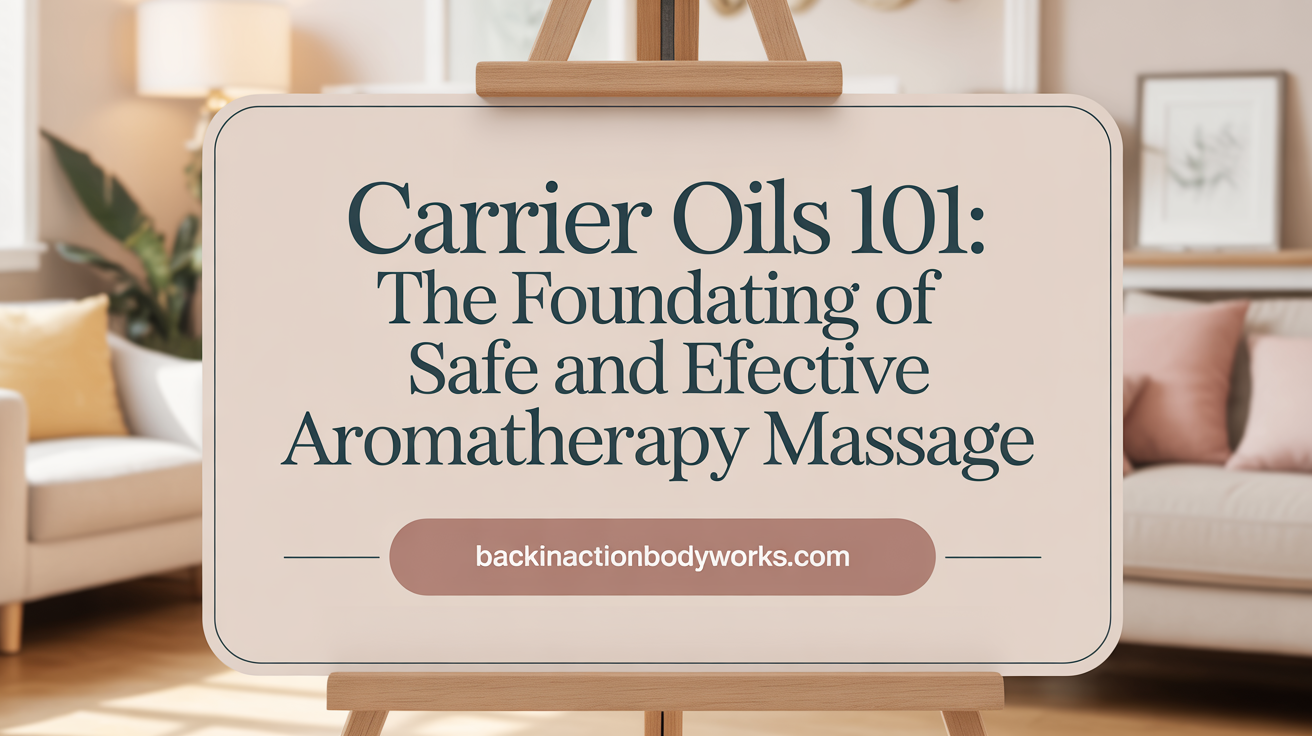
What are carrier oils and why are they essential in massage therapy?
Carrier oils are natural oils derived from the seeds, nuts, or kernels of plants. Their primary purpose in massage is to dilute essential oils, ensuring safe skin application and enhancing their absorption. They also provide a smooth glide, reducing friction on the skin.
Popular carrier oils used by massage therapists
Commonly used carrier oils include sweet almond oil, jojoba oil, coconut oil, grapeseed oil, and sesame oil. Each has unique properties suited to different skin types and massage goals.
Properties such as moisturizing and antibacterial qualities
Many carrier oils are rich in vitamins and fatty acids that moisturize and nourish the skin. For example, jojoba mimics skin sebum, while coconut oil has antibacterial properties. These features help maintain skin health during and after massage.
How carrier oils facilitate safe absorption of essential oils
Diluting essential oils in carrier oils prevents skin irritation and enhances their delivery through the skin’s layers. Proper dilution, often between 1% to 5%, is vital for safety and effectiveness.
Selecting carrier oils based on skin types and massage goals
Choosing the right carrier oil depends on the client’s skin type and massage purpose. Heavier oils like sesame are better for dry skin, while lighter oils such as grapeseed suit oily or acne-prone skin. For soothing or anti-inflammatory benefits, oils like jojoba or rosehip are ideal.
Best suited carrier oils for massage therapists and why?
Almond and coconut oils are favorites among massage therapists. Almond oil offers high moisture and gentle antibacterial effects, nourishing all skin types. Coconut oil provides a cooling sensation and has natural antimicrobial properties, making it excellent for sensitive or irritated skin.
| Carrier Oil | Main Benefits | Suitable Skin Types | Additional Uses |
|---|---|---|---|
| Almond | Moisturizing, gentle | All skin types | Deep hydration |
| Coconut | Antibacterial, cooling | Sensitive, irritated | Skin healing |
| Jojoba | Balances oil, resembles skin sebum | Oily, acne-prone | Acne and skin balancing |
| Grapeseed | Light, antioxidant-rich | Oily, combination | Anti-aging |
| Sesame | Nutritious, warming | Dry, mature | Nourishing |
Using the appropriate carrier oils enhances the therapeutic effects of massage while ensuring client comfort and safety. Proper selection and handling are essential for effective therapy.
Enhancing the Massage Experience: How Essential Oils Promote Health and Relaxation
How do essential oils enhance the massage experience and promote health and relaxation?
Essential oils play a vital role in elevating the benefits of massage by engaging both the senses and the body. Their aromatic compounds stimulate the olfactory system, which is directly connected to the brain's emotional centers, such as the amygdala. This connection can evoke feelings of calmness, alleviate anxiety, and foster a peaceful mental state. Oils like lavender, chamomile, and frankincense are commonly used for their relaxing properties, helping clients unwind more deeply.
When applied topically, diluted in carrier oils such as jojoba, sweet almond, or coconut oil, essential oils penetrate the skin to ease muscle tension, reduce soreness, and promote better circulation. This physical effect not only relieves discomfort but also enhances overall relaxation and skin nourishment, contributing to a holistic healing experience.
Integrating aromatherapy with massage can lead to measurable health improvements. Studies show that inhaling essential oils during massage can lower heart rate and blood pressure, supporting cardiovascular health. Additionally, the combined approach may improve sleep quality, reduce fatigue, and decrease stress levels.
For safe and effective use, selecting high-quality, pure essential oils and adhering to safety guidelines—such as proper dilution and patch testing—is crucial. When employed correctly, aromatherapy can significantly enhance the massage experience, offering both mental serenity and physical relief, leading to improved overall wellbeing.
Safety Considerations When Using Essential Oils in Massage Therapy
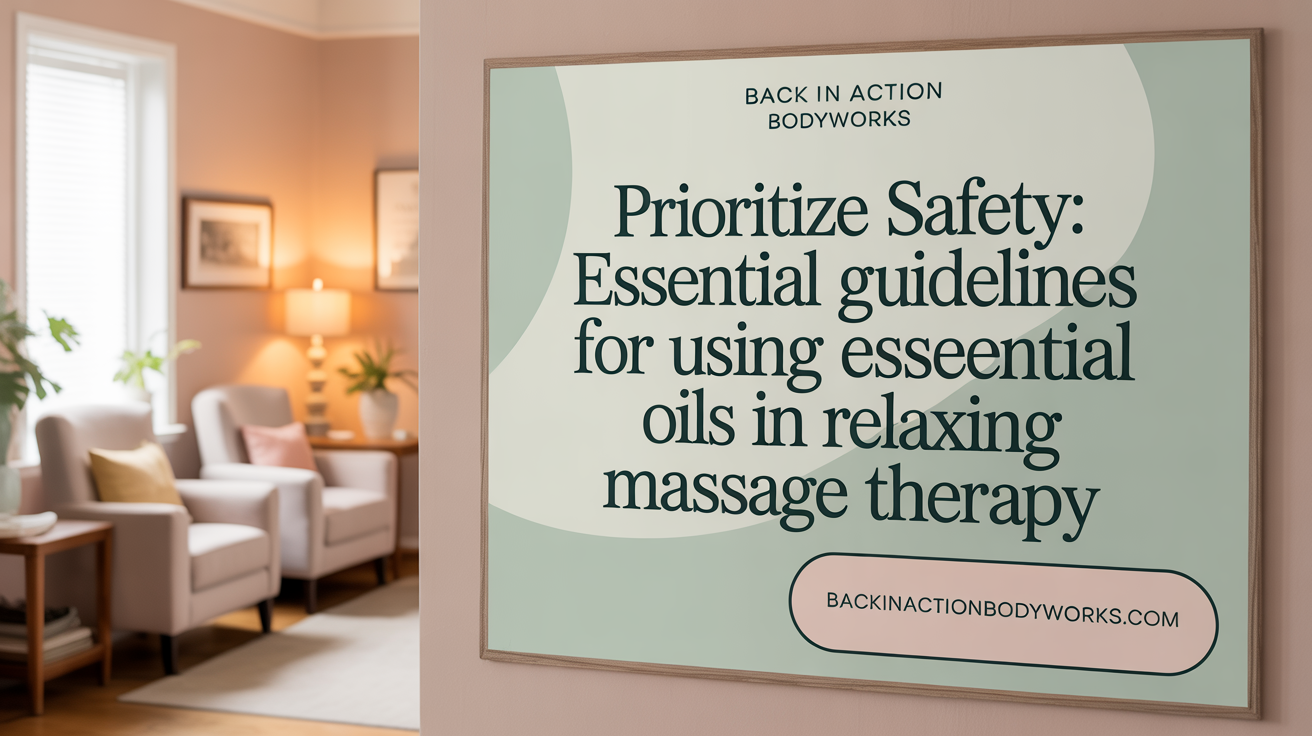
What safety guidelines and considerations should be followed when using essential oils in massage?
Using essential oils in massage can greatly enhance the therapeutic effects, but safety must always be a priority. Proper dilution of essential oils is essential; typically, they should be mixed with carrier oils like jojoba, coconut, or almond oil at concentrations ranging from 1% to 5%. This prevents skin irritation or allergic reactions that concentrated oils can cause.
Before applying oils broadly, conducting a patch test is recommended. This involves applying a small amount of diluted oil on a discreet skin area, such as the inner arm, and waiting 24 hours to watch for signs of allergy or sensitivity.
Clients’ medical histories, allergies, and sensitivities should be carefully reviewed. Certain oils, especially citrus ones like bergamot or lemon, are photosensitive and can cause skin burns or irritation if exposed to sunlight after application.
It is crucial to use only high-quality, pure essential oils obtained from reputable sources. Oils should be stored properly—ideally in a cool, dark place—to preserve their potency and prevent spoilage.
Some populations, including pregnant women, children, and individuals with certain medical conditions, should avoid specific oils. For example, oils like sage, pennyroyal, and wintergreen are contraindicated during pregnancy.
Additionally, oils such as eucalyptus, tea tree, and peppermint should be used with caution, especially in sensitive individuals, due to their potency.
In summary, safety in aromatherapy massage involves proper dilution, patch testing, careful selection of oils, good storage practices, and awareness of individual health factors. Consulting health professionals or certified aromatherapists can also provide personalized guidance to ensure safe and beneficial experiences.
Scientific Insights into the Efficacy of Essential Oils in Therapeutic Massage
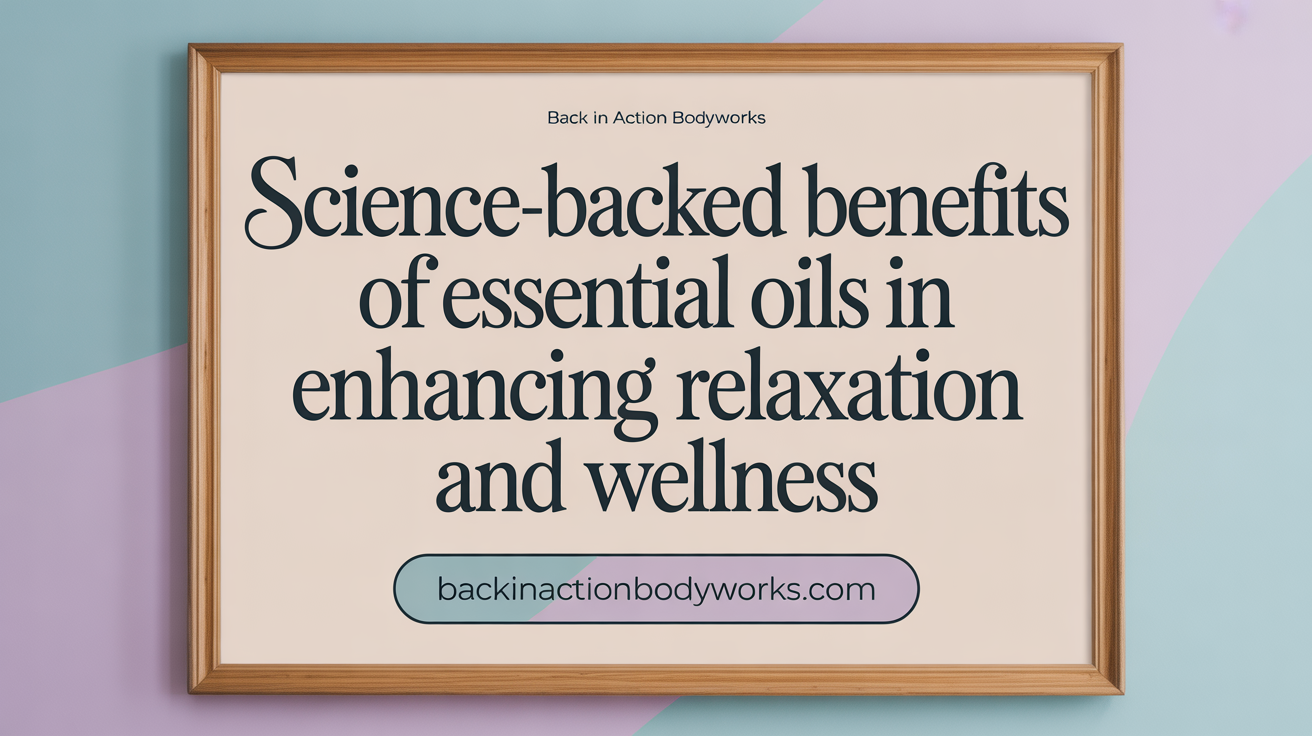
What does scientific research say about the effectiveness of essential oils in therapeutic massage?
Research supports the idea that essential oils can enhance massage therapy by delivering tangible health benefits. Multiple studies and meta-analyses show that aromatic and topical application of these plant extracts can help reduce pain, alleviate anxiety, and improve overall mood.
For example, lavender oil has been extensively studied for its calming and sleep-promoting effects. Clinical trials also demonstrate that combining lavender with massage can significantly lower anxiety levels, especially in clinical or elderly populations. Similarly, rosemary oil has been linked to improved mental clarity, increased alertness, and reduction of fatigue.
Research indicates that these oils work through various mechanisms. The scent of essential oils stimulates the olfactory system, which directly influences the limbic brain—our emotional center. This olfactory stimulation can trigger biochemical responses like the release of feel-good hormones, such as serotonin and endorphins. Furthermore, when diluted in carrier oils for massage, essential oils can be absorbed through the skin, reaching deeper tissues and influencing pain and inflammation.
Despite these promising findings, not all studies show consistent results. Some research reports minimal or no effects, partly due to differences in study design, types of oils used, or application methods. The variability underscores the need for more standardization and rigor in future research.
Incorporating scientific evidence into traditional practice highlights the importance of using high-quality oils and adhering to safety guidelines. While essential oils show potential, their integration into massage therapy should be performed thoughtfully, with validation from ongoing research.
Examples of oils with documented clinical benefits include:
| Essential Oil | Documented Benefits | Notes |
|---|---|---|
| Lavender | Anxiety relief, better sleep, reduced muscle tension | Extensively studied, safe when diluted |
| Rosemary | Increased mental clarity, reduced fatigue | Known to boost cognitive function |
| Frankincense | Relaxation, anti-inflammatory effects | Used historically for grounding |
| Eucalyptus | Respiratory relief, muscle soothing | Care needed to avoid skin irritation |
In summary, scientific evaluations support the potential of essential oils to enhance massage therapy. They contribute not only through aromatherapy's emotional effects but also via biochemical and physiological pathways. Nevertheless, their use should be guided by evidence-based practices, ensuring safety and effectiveness.
Harnessing Essential Oils for Holistic Massage Therapy
The integration of essential oils into therapeutic massage offers a profound enhancement to both physical and emotional wellness. By selecting specific oils tailored to individual needs and respecting safety protocols, therapists can amplify the benefits of massage—from relaxation and mood elevation to pain relief and improved sleep. Supported by both traditional wisdom and scientific research, essential oils serve as powerful allies in creating a holistic healing experience. As interest in natural therapies grows, understanding the why and how of essential oils in massage will empower practitioners and clients alike to embrace their potential for health and rejuvenation.
References
- 5 Essential Oils to Use in Massage | Natural Body Spa & SkinReMEDI
- The Magic of Essential Oils in Massage Therapy
- What Is Aromatherapy Massage? Oils, Benefits, Risks, and More
- How Massage Oils Enhance the Experience
- 11 Essential Oils: Their Benefits and How To Use Them
- The Ultimate Guide to Choosing the Best Professional Massage Oils
- Essential Oils' Role in Therapeutic Massage - Aquarius Wellness
- 7 Therapeutic Oils for Massage Therapy
Recent articles

Chiropractic Care: Key Benefits for Managing and Preventing Back Pain

Corrective Exercises That Support Long-Term Relief from Sciatica

Chiropractic Methods That Provide Lasting Relief from Back Pain
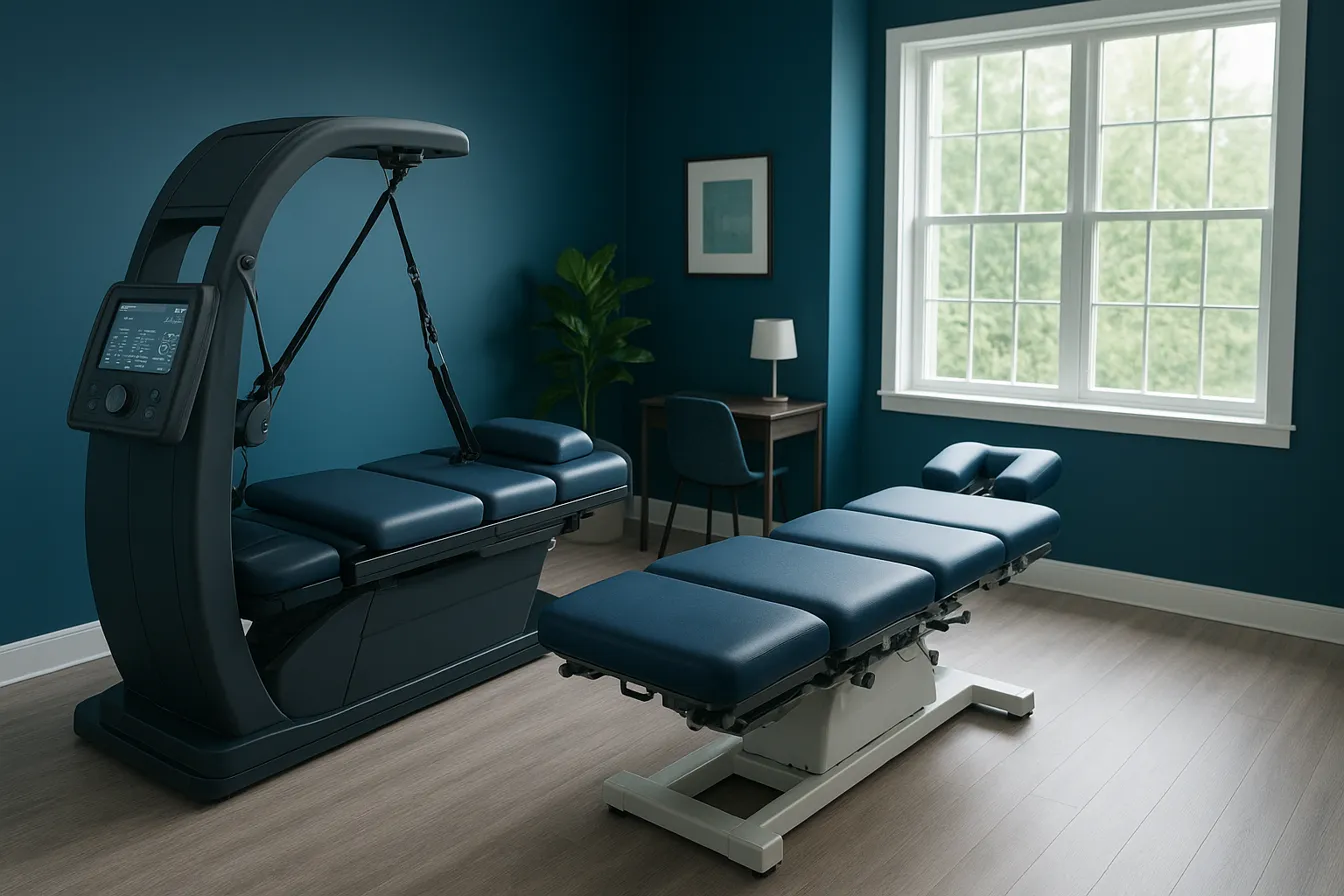
Understanding Spinal Decompression and Its Benefits for Sciatica

Real Patient Testimonials: Success Stories in Chiropractic Care

Top Questions to Ask Your Chiropractor During Your Initial Visit

Physiotherapy's Role in Supporting Chiropractic Treatment Plans

The Role of Diet and Nutrition in Enhancing Wellness and Chiropractic Care

Inspiring Patient Testimonials Highlighting Chiropractic Success

Chiropractic Care: A Natural Solution for Back Pain Relief

Amazing Patient Success Stories in Chiropractic Wellness

Combining Physiotherapy and Chiropractic for Optimal Healing

Spinal Decompression Therapy: A Breakthrough for Sciatica Sufferers

5 Holistic Treatments That Complement Chiropractic Care

How Physiotherapy Supports and Enhances Chiropractic Treatment

Root Cause Versus Symptom Treatment: Making the Right Choice

7 Essential Things to Know Before Choosing Your Chiropractor

Why Addressing Root Causes of Pain Matters More Than Just Symptoms

Nutritional Counseling Strategies to Boost Your Overall Wellness

How Spinal Decompression Therapy Alleviates Sciatic Nerve Pain

Long-Term Pain Relief Through Targeted Corrective Exercises

10 Benefits of Integrating Physiotherapy with Chiropractic Treatments

Corrective Exercises That Help Prevent Recurring Pain

8 Corrective Exercises Proven for Lasting Pain Relief

Lifestyle Habits for Maintaining a Healthy Spine

What You Will Experience at Your Initial Chiropractic Visit

What Happens at Your First Visit to a Chiropractor?

Focusing on Root Cause Analysis for Effective Pain Relief
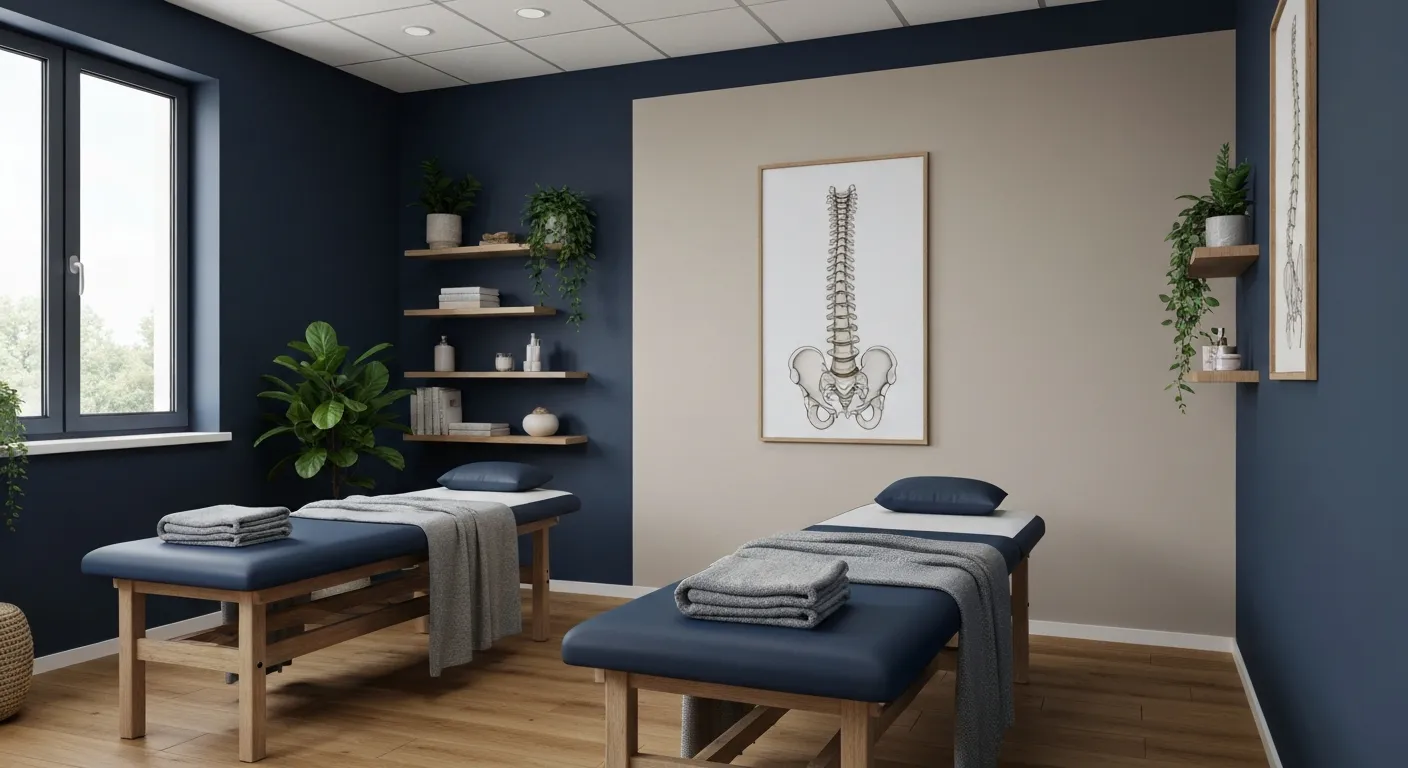
Tips for Lifestyle Changes to Support Spinal Health

Tips for Lifestyle Changes to Support Spinal Health

Holistic Treatment Plans: Alternatives to Surgery for Chronic Pain

Enhance Wellness Through Personalized Nutritional Counseling

Non-Invasive Pain Relief: Exploring Holistic Treatment Alternatives

Sciatica Relief Through Targeted Spinal Decompression

Integrating Physiotherapy with Chiropractic Treatments for Better Results

Testimonials That Demonstrate the Benefits of Chiropractic Care

The Power of Corrective Exercises in Pain Management

A Step-by-Step Guide to Your Initial Chiropractic Consultation

9 Nutritional Tips to Enhance Your Chiropractic Wellness Journey

Patient Experiences: How Chiropractic Care Changed Their Lives

Lifestyle Recommendations to Keep Your Spine in Top Shape

Effective Corrective Exercises for Long-Term Pain Relief

Back Pain Benefits: What Chiropractic Care Can Do for You

Spinal Decompression Techniques for Effective Sciatica Relief

Top Nutritional Counseling Tips for Enhanced Wellness

6 Lifestyle Habits That Boost Spine Health Daily

Discover Holistic and Non-Surgical Pain Relief Solutions

Exploring Holistic and Non-Surgical Treatment Options for Pain

The Role of Physiotherapy in Enhancing Chiropractic Care Outcomes

Complementing Chiropractic Care with Physiotherapy: What You Need to Know

What to Expect During Your First Chiropractic Visit

Simple Lifestyle Adjustments to Maintain a Healthy Spine

Personalized Nutritional Counseling for Improved Health Outcomes

Exploring Non-Surgical Treatments for Spine-Related Conditions

An Introduction to Spinal Decompression for Sciatica Patients

Transformative Success Stories: Patient Experiences with Chiropractic Treatments

Why Chiropractic Care Is Essential for Back Pain Relief

Addressing Underlying Causes Versus Symptom Management in Pain Care

The Role of Nutrition in Enhancing Chiropractic Treatment Effectiveness

Sciatica Treatment Options: Is Spinal Decompression Right for You?

Lifestyle Tips to Maintain a Healthy Spine and Prevent Back Issues

The Synergy Between Physiotherapy and Chiropractic Treatments

What Happens During Your Initial Chiropractic Consultation

Effective Corrective Exercises for Sustainable Pain Management

Taking a Root Cause Approach to Chronic Pain Management

Holistic Pain Management Techniques Without Surgery

How Patient Success Stories Validate Chiropractic Care Benefits

Spinal Decompression: Innovative Treatment for Sciatic Nerve Pain

Spinal Decompression Therapy: A Non-Invasive Approach to Sciatica Relief

Exploring Holistic Approaches Beyond Surgery for Pain Relief

Practical Lifestyle Advice to Support a Healthy Spine Every Day

Corrective Exercise Routines Designed for Long-Term Pain Prevention

Real Patient Stories: Overcoming Chronic Pain with Chiropractic Care

Lifestyle Changes That Promote a Healthy Spine and Prevent Injury

How Addressing the Root Cause of Pain Leads to Lasting Relief

Non-Surgical Holistic Therapies to Manage Chronic Pain Effectively

Nutritional Counseling's Impact on Physical Health and Healing

Benefits of Regular Chiropractic Care for a Stronger Back

Your First Chiropractic Visit: What to Expect and How to Prepare

Patient Experiences: How Chiropractic Care Transformed Their Lives

Exploring Holistic, Non-Surgical Options for Pain Management

Combining Physiotherapy with Chiropractic Treatments for Enhanced Recovery

Holistic Treatments That Offer Alternatives to Surgery for Pain Relief

Corrective Exercise Strategies for Long-Term Spine Health

How Physiotherapy Complements Chiropractic Adjustments for Better Outcomes

First-Time Chiropractic Visitors: What You Should Know

Understanding the Importance of Treating Pain at Its Source

Adopting Lifestyle Changes to Support Your Spine's Wellness

Utilizing Physiotherapy to Enhance Chiropractic Treatment Outcomes

The Key Advantages of Chiropractic Care for Back Pain Sufferers

Why Focusing on Root Causes Improves Pain Treatment Success

Corrective Exercises That Promote Lasting Pain Relief and Mobility

Sciatica Relief Through Targeted Spinal Decompression Techniques

Preparing for Your First Chiropractic Appointment with Confidence

Healthy Lifestyle Habits for Maintaining Spinal Alignment

Success Stories Highlighting Chiropractic's Role in Pain Recovery

Top Benefits of Chiropractic Care for Chronic Back Pain

Nutrition Tips to Boost Your Overall Wellness and Recovery

How Chiropractic Care Alleviates Back Pain Naturally

